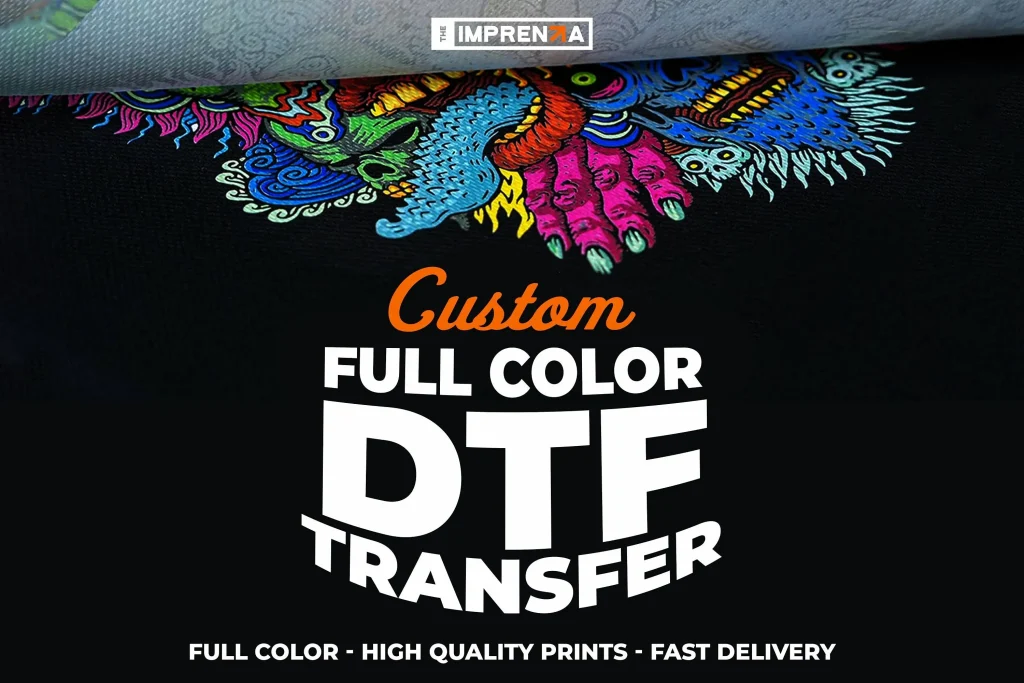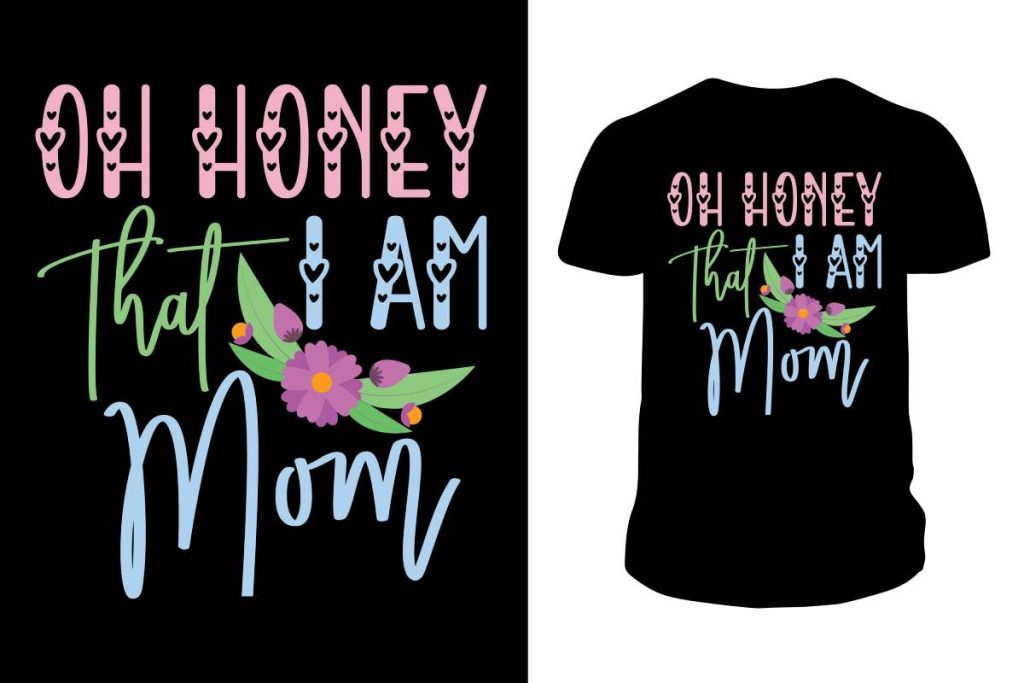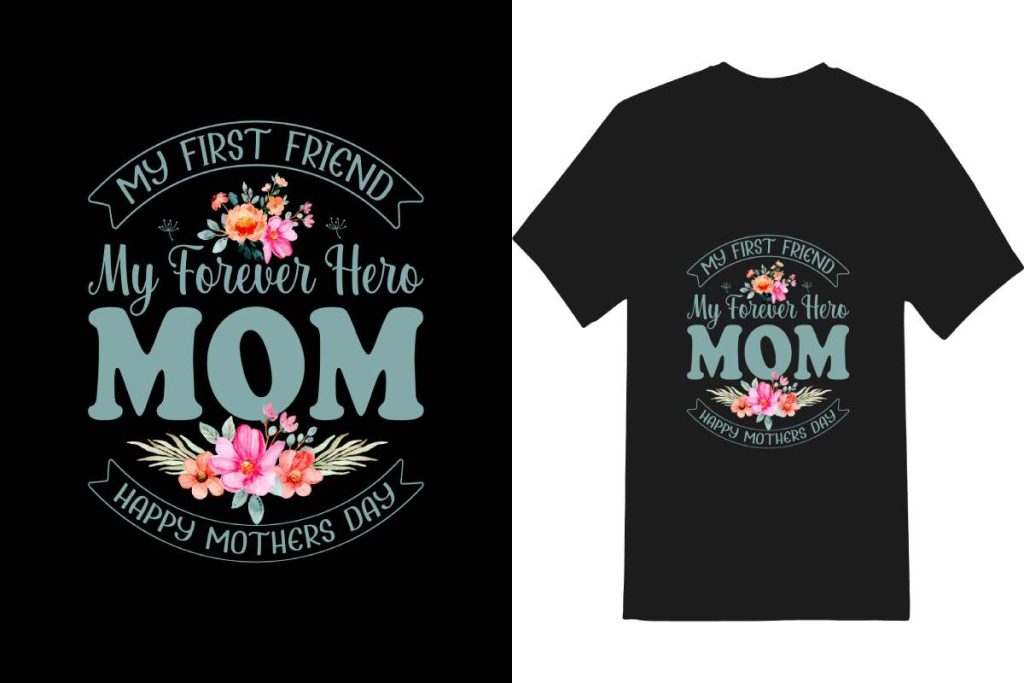In the dynamic realm of custom garment decoration, DTF transfers, or Direct to Film transfers, have rapidly emerged as a preferred choice for designers seeking exceptional quality and vibrant colors. This innovative printing technology allows for intricate designs to be effortlessly transferred onto various fabrics, offering unrivaled durability and visual appeal. As you navigate the world of DTF transfer technology, knowing how to select high-quality DTF transfers can significantly elevate your creative projects. Whether you’re printing branded apparel or trendy custom pieces, understanding the nuances of choosing DTF transfers will ensure your designs are both eye-catching and enduring. Join us as we explore the essential components to consider in order to make the best decision for your DTF printing needs.
In recent years, advancements in fabric decoration techniques have led to the popularity of Direct to Film (DTF) printing, which has revolutionized how designs are applied to textiles. Touted for its ability to yield high-quality results, this method provides an excellent alternative to traditional printing approaches like screen printing or heat transfers. When opting for DTF transfer solutions, it’s crucial to consider various elements that can impact the final outcome, including film selection, ink compatibility, and application methods. Understanding the intricacies of DTF transfer technology will allow you to create stunning garments with rich colors and sharp details. Let’s dive deeper into what makes DTF transfers such a game-changer in the world of custom printing.
Understanding the Basics of DTF Transfers
DTF transfers, or Direct to Film transfers, represent a revolutionary approach in the world of custom printing, primarily in garment decoration. Unlike traditional methods such as screen printing, DTF technology enables artisans to print intricate designs directly onto a special film, which can then be transferred onto fabric with remarkable precision. This method not only allows for vibrant colors but also ensures that the finished product retains the softness and breathability of the original garment, making it ideal for a wide range of apparel.
The essence of DTF transfers lies in their ability to work with various fabrics, including cotton, polyester, and blends, offering tremendous versatility. Many users find that the DTF transfer process reduces the need for extensive color separations in artwork, streamlining the production process. Moreover, the technology is proving to be a cost-effective solution for both small-scale designers and larger printing operations looking to deliver high-quality custom designs.
Choosing High Quality DTF Transfers
When selecting DTF transfers, quality should be your top priority. High-quality DTF transfers can significantly impact not just the visual appeal of a garment but also its durability over time. Look for reputable brands known for their DTF films, such as Avery and Hansel, which are recognized for their reliable performance in the market. Utilizing top-tier materials ensures that your transfers adhere well to clothing, resist flaking, and maintain visual brilliance through multiple washes.
In addition to film quality, consider the ink you plan to use. Water-based inks are often recommended for DTF printing due to their vibrancy and eco-friendliness. It’s essential to ensure that the ink is compatible with the film and adheres properly during the heat transfer process. Selecting both high-quality films and inks will result in stunning transfers that not only look exceptional but also withstand the test of time.
Features to Consider in DTF Transfers
Different DTF films come with unique features that can significantly influence the outcome of your designs. One crucial feature to consider is the thickness of the film, which can vary across products. Thinner films provide a softer feel on the finished garment, creating more comfortable wear. On the other hand, thicker films can impart additional durability, making them suitable for heavy use. It’s essential to choose a film thickness that aligns with your project requirements.
Another vital characteristic to evaluate is the finish of the transfer. Options typically include matte or glossy finishes, each contributing to the design’s overall aesthetic. Matte finishes provide a sophisticated and understated look, ideal for designs that require subtlety, while glossy finishes create a lively and eye-catching effect. Additionally, some modern DTF films come with self-weeding properties, which allow for easier application by minimizing the amount of excess film surrounding the design, thus simplifying the transfer process.
Optimizing Print Resolution for DTF Transfers
Print resolution is a critical aspect of the DTF transfer process, significantly affecting the quality of your final product. When preparing designs, ensure that your DTF printer is set to the highest possible DPI (dots per inch) settings that it can handle. A higher DPI results in sharper images and finer detail, particularly valuable in intricate designs or those incorporating fine text.
It’s also crucial to consider the size of the transfer relative to the garment. Design your transfers to fit appropriately within the designated areas of your apparel to avoid overwhelming the clothing’s aesthetics. Adjustments in size not only enhance the visual appeal but also contribute to better adherence during the transfer process.
Curing and Pressing Techniques for DTF Transfers
The curing and pressing processes are fundamental to the success of DTF transfers, as they ensure the longevity and quality of the final product. Following precise temperature and time guidelines is essential. Most manufacturers recommend pressing DTF transfers at temperatures between 120-150 degrees Celsius for about 10-15 seconds under appropriate pressure to achieve the desired bond. Adhering to these guidelines contributes to the uniformity and durability of your designs.
Avoid common pitfalls associated with pressing, such as incorrect temperature settings or insufficient pressure, as these can lead to issues like peeling or premature fading of your designs. A meticulous approach to curing will not only enhance the quality of your DTF transfers but also instills confidence in your craftsmanship, ensuring satisfaction among your customers.
Testing Materials Before Finalization
Before placing large bulk orders for DTF transfers, it’s wise to conduct thorough testing with samples from various suppliers. Sample testing allows you to evaluate your chosen films and inks’ performance on different fabric types, ensuring compatibility with your printing setup. This practice is essential for identifying any potential issues before committing to larger quantities.
During testing, assess factors such as quality, durability, and the ease of the application process. Experiment with various designs and materials to discover the combination that yields the best results for your business needs. This proactive approach will position you to make informed decisions, enhancing the chances of achieving high-quality outcomes in your custom DTF transfer projects.
Frequently Asked Questions
What are DTF Transfers and how do they work?
DTF Transfers, or Direct to Film transfers, are a modern printing technology used for garment decoration. This method prints designs directly onto a special film, which is then heat-applied to fabrics. DTF technology allows for high-quality, vibrant prints that are soft to the touch and maintain the fabric’s breathability, making them ideal for various clothing materials.
How do I choose the best DTF transfer films for my projects?
When choosing the best DTF transfer films, consider factors like film quality, thickness, and texture. Quality films, such as those from recognized brands like Avery and Hansel, ensure good adhesion and durability. Additionally, opt for films that offer self-weeding properties to simplify the transfer process and enhance the final product’s quality.
What should I look for in high-quality DTF transfers?
High-quality DTF transfers should demonstrate excellent adhesion, vibrant color accuracy, and durability after washing. When selecting, ensure the films and inks used are compatible and that the printer settings are optimized for high DPI resolutions to achieve intricate and detailed designs.
Can I use any ink with DTF transfer technology?
No, not all inks are compatible with DTF transfer technology. It is recommended to use water-based inks, as these provide vibrant colors and a softer feel. Always check the manufacturer’s guidelines to ensure the inks you choose are suitable for the specific DTF films you are working with.
What are the common mistakes to avoid with DTF Transfers?
Common mistakes in DTF Transfers include incorrect pressing temperatures and times, which can lead to issues such as peeling or fading. Always adhere to the manufacturer’s recommended conditions, typically around 120-150 degrees Celsius for 10-15 seconds, to ensure optimal curing and a long-lasting transfer.
How can I test DTF transfers before placing a bulk order?
Before committing to bulk orders of DTF transfers, gather samples from various suppliers. Testing these samples allows you to evaluate the film’s performance on different fabrics and check compatibility with your printing setup. This practice helps ensure that you make the right choice for quality and durability in your projects.
| Key Point | Details |
|---|---|
| Introduction to DTF Transfers | DTF transfers allow for vibrant, high-quality prints on garments. |
| Understanding DTF Technology | DTF printing offers flexibility and quality, producing prints directly onto special film. |
| Choosing the Right Film and Ink | Select high-quality films and ensure ink compatibility for best results. |
| Deciding on Transfer Features | Consider thickness, texture, finish type, and self-weeding properties. |
| Print Resolution and Size | Use appropriate DPI settings and adjust transfer sizes for garments. |
| Drying and Pressing Processes | Follow manufacturer guidelines for curing and avoid pressing mistakes. |
| Testing and Samples | Evaluate samples from various suppliers before bulk orders. |
Summary
DTF Transfers are a revolutionary method in custom garment decoration, allowing creators to achieve stunning results with vibrant colors and exceptional detail. By thoroughly understanding the nuances of DTF technology, such as the importance of film and ink, as well as various transfer features, designers can significantly enhance their production processes. Additionally, paying close attention to print resolution, proper curing, and testing samples before finalizing choices are critical steps to ensuring high-quality outcomes. As this technology continues to evolve, those in the garment decoration industry must stay updated on advancements and continually refine their techniques, positioning themselves to deliver top-notch designs that meet customer satisfaction.



